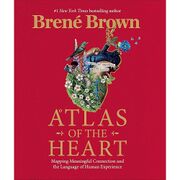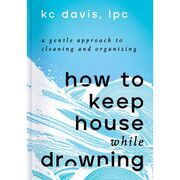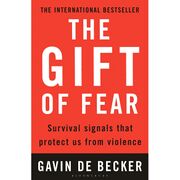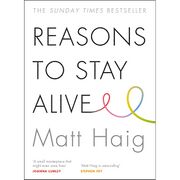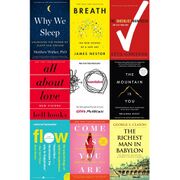What Happened To You?
🍎 Healthy brain food
"The title What Happened to You? signifies a shift in perspective that honors the power of the past to shape our current functioning."
— Bruce D. Perry; Oprah Winfrey, What Happened to You? (2021)
Introduction
| What Happened to You? | |
|---|---|
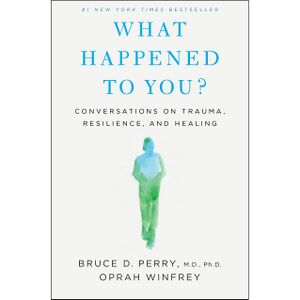 | |
| Full title | What Happened to You?: Conversations on Trauma, Resilience, and Healing |
| Author | Bruce D. Perry; Oprah Winfrey |
| Language | English |
| Subject | Trauma; Resilience; Healing; Neuroscience; Child development |
| Genre | Nonfiction; Self-help; Psychology |
| Publisher | Flatiron Books: An Oprah Book |
Publication date | 27 April 2021 |
| Publication place | United States |
| Media type | Print (hardcover); e-book; audiobook |
| Pages | 304 |
| ISBN | 978-1-250-22318-0 |
| Goodreads rating | 4.4/5 (as of 6 November 2025) |
| Website | us.macmillan.com |
📘 What Happened to You? is a 2021 nonfiction book by child psychiatrist Bruce D. Perry and Oprah Winfrey that reframes trauma by shifting the question from “What’s wrong with you?” to “What happened to you?”, published in the U.S. by Flatiron Books: An Oprah Book on 27 April 2021.[1] Presented as a series of conversations that blend neuroscience explanations with life stories, the book adopts an interview-style structure across themed chapters.[2][3] It distills core ideas from Perry’s neurodevelopmental work—especially the “Regulate, Relate, Reason” sequence used in trauma-informed practice—to help readers recognize patterns and apply regulation-first responses.[4][1] In the U.S., it opened at #1 on Publishers Weekly’s Hardcover Nonfiction list for the week of 10 May 2021.[5] The publisher also reports more than one million copies sold and a #1 appearance on The New York Times bestseller list.[1] The audiobook, read by both authors, drew praise from AudioFile as “a must-hear” with “capable, likable narrators.”[6]
Chapter summary
This outline follows the Flatiron Books hardcover edition (2021, ISBN 978-1-250-22318-0).[1][3]
🧠 1 – Making Sense of the World. An upside-down triangle of the brain frames the discussion: the base handles survival responses, the middle supports emotion and attachment, and the top is the cortex for reflection, planning, and language. Sensory input moves bottom-up, so bodies react and feelings surge before words can form. Early repetition—feeding, rocking, being soothed, or, in harsher contexts, neglect and threat—lays down this processing order. Those repetitions become a personal “codebook” that shapes what feels safe, what feels risky, and how fast arousal rises. This model explains sudden flips into fight, flight, or freeze when cues match old patterns. Reasoning rarely works when someone is dysregulated; the cortex stays offline until lower systems settle. Examples across classrooms, clinics, and families show behavior that looks defiant but actually protects against perceived danger. Readers are invited to trace the patterns that trained their brains to expect certain outcomes. Patterned input sculpts neural networks, so perception and behavior mirror stored associations; understanding those patterns reframes struggle from “what’s wrong with me?” to “what happened to my nervous system, and when.”
⚖️ 2 – Seeking Balance. In her twenties, working hundred-hour weeks as a TV reporter, Oprah noticed racing pulse, exhaustion, and irritability, and tried to blunt them with the most accessible regulator at hand: food. The pace pushed her further out of rhythm, so she carved out a boundary—Sundays as protected time—and used nature walks and breath-paced movement to return to baseline. She learned to step back from draining interactions, create a nonphysical wall when needed, and heed signals that energy must be conserved and restored. Rhythms—breathing, steps, heartbeat—act as metronomes, while sensory anchors like trees, leaves, and stillness help the stress response settle. Daily choices such as sleep, movement, and laughter link to reward and arousal circuits; some quick fixes soothe briefly but erode well-being over time. Boundaries are not withdrawal; they are conditions for calm connection. Regulation precedes sound decisions and relationships, and rhythmic self-care with protected routines quiets overactive stress networks so attention and judgment can return. Music, laughter, dancing (even a party for one), knitting, cooking—finding what naturally soothes you not only regulates your heart and mind, it helps you stay open to the goodness in you and in the world.
🔁 3 – The Power of Pattern: Regulate, Relate, Reason. Picture a student arriving to class overwhelmed; instead of launching into a talk about behavior, an adult first matches breath and pace on a short walk, offers a steady presence, and only later discusses what went wrong. That sequence—calm the body, connect to a person, then think together—recurs as a practical map for moments of distress. A visual model places bodily regulation at the foundation of learning and problem-solving. Patterned, repetitive, rhythmic activity—walking, drumming, humming, paced breathing—tones the stress response and brings the cortex back online. Once settled, eye contact, voice tone, and predictable turn-taking rebuild social safety; only then do words, plans, and consequences make sense. Co-regulation often comes before self-regulation, especially for children and anyone with a sensitized stress system. The summary distinguishes relating (felt safety) from reasoning (ideas that stick), which is why lectures fail during meltdowns. Brains learn and heal in sequence: use rhythmic patterns to downshift arousal, add relationship cues to signal safety, and then engage higher-order thinking to consolidate change.
🧩 4 – The Spectrum of Dissociation. During a sudden school fire-alarm drill, one child bolts for the door while another goes still, eyes fixed on the hallway clock as the bell ricochets off cinder-block walls and fluorescent lights flicker overhead. The same cue drives two survival routes: a surge into hyperarousal or a drop into shut-down. The continuum runs from everyday spacing out on a bus to profound detachment, Depersonalization, or time-loss when overwhelming stress makes escape impossible. Attention narrows, pain and sensory input can dim, and memory fragments into disjointed images or body sensations. State-dependent learning explains why later reminders—a smell, a ringtone, a tone of voice—can trigger the same response with little conscious thought. Protective dissociation differs from patterns that persist and intrude, especially when repeated adversity trains the nervous system to default to numbness. Practical vignettes show clinicians and teachers pausing demands, lowering stimulation, and using rhythmic cues to bring awareness back online. The brain conserves energy and protects the self by disconnecting when trapped, and repetition across development can widen that response. Seen this way, troubling lapses are learned survival adaptations shaped by what happened, not defects.
🧭 5 – From State to Trait. In a busy clinic late in the afternoon, monitors beep as a patient flinches at each door slam; another, raised in a predictable home, looks up and returns to a magazine. Moment-to-moment internal states—calm, alert, alarmed, terrified—ride on physiology, but repeated states carve long-lasting traits such as vigilance, impulsivity, or mistrust. Early unpredictability biases the stress system toward quick activation and slow recovery, while steady caregiving builds a wider window for flexibility. A child who once needed hyperalertness to stay safe may grow into an adult baseline of jumpiness, shallow sleep, and a hair-trigger for threat detection. Conversely, repeated, patterned experiences of safety—consistent routines, soothing voices, responsive touch—shift set points toward steadiness. These trajectories arise not from willpower but from neural networks strengthened through use, much like muscles built by practice. The same logic governs learning: when arousal runs high, reasoning fades; when arousal is moderated repeatedly, attention and memory consolidate. What looks like personality often reflects yesterday’s survival state practiced into today’s default; changing it requires enough patterned, regulated experiences to teach the body new expectations.
🤝 6 – Connection Is Regulation. A teacher meets an upset student in the hallway, walks a slow loop while matching steps and breaths, offers a warm voice and steady eye contact, and only then returns to discuss what happened. The sequence shows a central pattern: bodies settle first, relationships feel safe next, and only afterward do words and logic stick. Across homes, clinics, and courtrooms, small, repeatable actions—rocking in a chair, humming, gentle tapping, call-and-response routines—downshift arousal and invite co-regulation. Familiar faces, predictable greetings, and attuned prosody signal “you’re safe with me,” restoring access to language, memory, and problem-solving. Relational richness buffers stress: many, varied, benevolent interactions build resilience, while relational scarcity keeps the system on edge. Lectures to a dysregulated brain land as noise; short, sensory-rich moments restore connection before any reasoning. The approach scales from one-to-one to systems by embedding rhythms and relational rituals into the day. Consistent, attuned human presence steadies physiology; connection is the pathway to calm, which is why “regulate, relate, reason” works in that order.
🌳 7 – Intergenerational Echoes. At a multigenerational gathering, stories about scarcity, strictness, and keeping your head down surface around a kitchen table while children mirror adults’ tones and rhythms. Everyday signals—voice volume, mealtime rules, touches, jokes, and silences—carry forward stress responses learned by earlier generations. Vigilance, numbing, or explosive anger can become routine, not through intention, but through modeling and the nervous system’s bottom-up learning. Examples move from subtle cues, like a slammed drawer that makes a child jump, to entrenched patterns, like a caregiver who withdraws during conflict because withdrawal once kept them safe. The discussion separates inherited stories about danger from the attachment practices that transmit them and notes how children tune to the most consistent pattern in the room. Health, schooling, and justice systems can mistake these learned protections for character flaws, further locking families into roles they once needed to survive. Practical scenes show how new rituals—predictable greetings, shared meals without background noise, unhurried bedtime routines—retune family rhythms. Families pass down nervous-system expectations alongside heirlooms; patterned caregiving teaches bodies what to anticipate under stress, and breaking the cycle requires many safe, rhythmic, connected experiences over time.
🏛️ 8 – Our Brains, Our Biases, Our Systems. In a crowded intake lobby, a raised voice is read as threat by a guard wired for speed, while the speaker experiences the guard’s posture as danger—a feedback loop of misreading driven by arousal, history, and context. Such micro-moments link to implicit bias, where a sensitized stress response narrows perception and favors quick pattern-matching over reflection. Under load, the brain leans on prior associations—who looks safe, which voice sounds defiant—and lectures or one-off trainings do not rewire those associations if environments remain dysregulating. Scenes from classrooms, clinics, and courtrooms show how procedures built for efficiency—tight schedules, bright lights, unpredictable waits—pull people into survival states where empathy and nuance fade. When many individuals in a system are stressed, the rules they craft can mirror that stress: Zero-tolerance policies, rigid scripts, and rushed interactions that escalate rather than soothe. Structures that change state first—quiet waiting areas, predictable sequences, warm greetings—let reasoning and fairness take hold. Adjust conditions, not just attitudes, so people can access their best thinking. Bias operates as a state-dependent shortcut shaped by experience; making systems regulation-supportive helps people perceive accurately and act justly.
🍽️ 9 – Relational Hunger in the Modern World. A visit to a Māori community in Aotearoa New Zealand begins with a pōwhiri on the marae—song, welcome, food, and shared time that emphasize kinship and place—before any discussion of trauma or therapy. That experience frames the theme: modern life has thinned everyday contact into “relational poverty,” where mobility, long work hours, and screen-mediated interactions replace dense webs that buffer stress. Vignettes compare the restorative impact of unhurried conversation, shared meals, and communal rituals with the jittery after-effects of scrolling or rapid-fire messaging. Loneliness and fragmentation raise baseline arousal, making minor hassles feel like emergencies and leaving people more vulnerable to exploitation, addiction, or despair. “Therapeutic webs” form across teachers, neighbors, coaches, and elders, each offering small doses of regulation that add up across the day. Connection functions as a protective factor, not a luxury, with examples from schools and community programs that schedule rhythm and relationship into the day. Practical suggestions include predictable touchpoints—check-ins, walking groups, shared music—and spaces that invite lingering rather than rushing. Humans require nutrient-dense relationships to stay regulated, and repeated, reciprocal interaction steadies physiology and widens capacity for reasoning and empathy.
🌱 10 – What We Need Now. A community center pilots simple routines—morning greetings, brief movement breaks, quiet corners, and end-of-day check-outs—collecting tiny wins that make classrooms calmer and waiting rooms kinder. All tools converge into one sequence: change bodily state first, signal safety through relationship, then invite reflection and planning. Progress is framed as a dosing problem—how much, how often, how long—where small, rhythmic, positive experiences accumulate into durable change. Case sketches show caregivers and front-line workers weaving regulation into ordinary moments: two minutes of paced breathing before a meeting, a short walk with a distressed student, a softer tone at shift change. Leaders are urged to design for connection by protecting time, reducing chaotic stimuli, and measuring success by felt safety and throughput. Policy should fund relationship-rich settings—early childhood programs with low ratios, mentoring, neighborhood hubs—because outcomes track the density of supportive ties. Across levels, the advice is pragmatic: start where you stand, repeat what works, and enlist many helpers rather than relying on a single expert. Healing grows from accessible patterns anyone can practice; aligning homes, schools, services, and workplaces around “regulate, relate, reason” lets nervous systems learn a different future.
Background & reception
🖋️ Author & writing. Bruce D. Perry, M.D., Ph.D., is the principal of the Neurosequential Network and has held adjunct academic appointments; his work examines how developmental adversity alters brain and behavior.[7][8] He also serves as Senior Fellow of The ChildTrauma Academy, a nonprofit focused on improving outcomes for maltreated children.[9] Oprah Daily published a feature on 22 April 2021 in which they outlined why they co-authored the book and how it emerged from Super Soul conversations.[10] The first U.S. edition carries the “An Oprah Book” imprint and credits Melcher Media as producer.[3] Stylistically, the writing alternates Winfrey’s personal narratives with Perry’s explanations; the print edition color-codes their voices, while the audiobook is read by both authors.[11][12] Conceptually, the book popularizes elements of the Neurosequential Model and Perry’s sequence of engagement—“Regulate, Relate, Reason”—now widely referenced in Trauma-informed practice materials.[13][4]
📈 Commercial reception. The book debuted at #1 on Publishers Weekly’s Hardcover Nonfiction list (and #2 overall) for the week of 10 May 2021.[5] Macmillan reports that it has sold more than one million copies and reached #1 on The New York Times bestseller list.[1] The University of Illinois School of Social Work notes it has been translated into 26 languages and remained on the NYT lists for over 100 weeks after first reaching #1 in April 2021.[14]
👍 Praise. Kirkus Reviews called the book “a candid guidebook to exorcising mental trauma,” highlighting its conversational interview format that pairs case material with brain science.[2] AudioFile Magazine praised the audiobook’s “capable, likable narrators” and deemed it “a must-hear” for those recovering from trauma.[6] For clinicians, the British Journal of General Practice’s BJGP Life review described it as an accessible blend of research and storytelling that helps readers link present behavior to past experiences.[15]
👎 Criticism. The BJGP Life review also cautioned against superficial “trauma-informed” labeling, noting “it is impossible to become truly trauma-informed from a workshop alone,” and warned that ACE checklists should not be used to assign individual “scores.”[15] In parallel, a 2021 JAMA Pediatrics analysis found that ACE scores have limited predictive accuracy for individual health outcomes, questioning their value for screening.[16] The American College of Preventive Medicine’s 2022 position statement recommends against routine individual ACE screening in clinical settings, favoring population-level surveillance and supportive care.[17] A 2024 Pediatrics critical review likewise emphasized that the ACE questionnaire was not designed for clinical screening or decision-making, echoing concerns about oversimplified applications.[18]
🌍 Impact & adoption. Universities and professional groups have organized book-study programs around the text, such as a 2025 three-part series hosted by the University of Illinois School of Social Work.[14] The Wyoming School Counselor Association ran a six-session online study in October–November 2022.[19] Iowa ASCD likewise included a “What Happened to You?” book study in its 2021–2022 Curriculum Leadership Academy for educators.[20]
Related content & more
YouTube videos
CapSach articles
Enjoyed this page?
📚If this page What Happened To You? inspired or helped you today, a small coffee helps us keep creating and sharing more. Your support truly matters.👏
References
- ↑ 1.0 1.1 1.2 1.3 1.4 "What Happened to You?". Macmillan. Macmillan Publishers. 27 April 2021. Retrieved 28 October 2025.
- ↑ 2.0 2.1 "WHAT HAPPENED TO YOU? CONVERSATIONS ON TRAUMA, RESILIENCE, AND HEALING". Kirkus Reviews. 27 April 2021. Retrieved 28 October 2025.
- ↑ 3.0 3.1 3.2 "What happened to you? : conversations on trauma, resilience, and healing". WorldCat. OCLC. Retrieved 28 October 2025.
- ↑ 4.0 4.1 "Regulate, Relate, Reason and Restore (Information Note)" (PDF). Education Scotland. Retrieved 28 October 2025.
- ↑ 5.0 5.1 "This Week's Bestsellers: May 10, 2021". Publishers Weekly. 7 May 2021. Retrieved 28 October 2025.
- ↑ 6.0 6.1 "WHAT HAPPENED TO YOU? (Audio review)". AudioFile Magazine. Retrieved 28 October 2025.
- ↑ "Our Team – Bruce D. Perry". Neurosequential Network. Retrieved 28 October 2025.
- ↑ "About Bruce D. Perry". bdperry.com. Retrieved 28 October 2025.
- ↑ "CTA Fellows". The ChildTrauma Academy. Retrieved 28 October 2025.
- ↑ "Oprah and Bruce Perry Explain the Meaning of "Post-Traumatic Wisdom"". Oprah Daily. 22 April 2021. Retrieved 28 October 2025.
- ↑ "Book review: What Happened to You?". Missouri State Teachers Association. 2025. Retrieved 28 October 2025.
- ↑ "What Happened to You? (Macmillan Audio)". Macmillan Audio. Retrieved 28 October 2025.
- ↑ "The Neurosequential Network". Neurosequential Network. Retrieved 28 October 2025.
- ↑ 14.0 14.1 "3-Part Book Study: "What Happened to You?"". University of Illinois School of Social Work. 29 September 2025. Retrieved 28 October 2025.
- ↑ 15.0 15.1 "What Happened to You? (Book review)". BJGP Life (Royal College of General Practitioners). 16 December 2021. Retrieved 28 October 2025.
- ↑ Baldwin, J. R. (2021). "Population vs Individual Prediction of Poor Health From Adverse Childhood Experiences". JAMA Pediatrics. 175 (12): 1255–1263. Retrieved 28 October 2025.
- ↑ Sherin, K. M. (2022). "Position Statement by the American College of Preventive Medicine: Adverse Childhood Experiences". American Journal of Preventive Medicine. 63 (3): 512–517. Retrieved 28 October 2025.
- ↑ Austin, A. E. (2024). "Screening for Adverse Childhood Experiences: A Critical Review". Pediatrics. 154 (6): e2024067307. Retrieved 28 October 2025.
- ↑ "What Happened to You? Book Study". Wyoming School Counselor Association. Retrieved 28 October 2025.
- ↑ "ISEA Academy Classes BOEE Report (Oct. 2021–Sept. 2022)" (PDF). Iowa State Education Association. 7 March 2023. Retrieved 28 October 2025.

